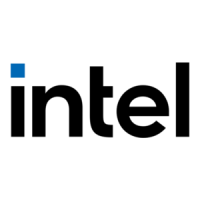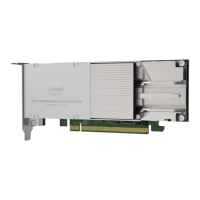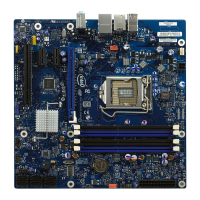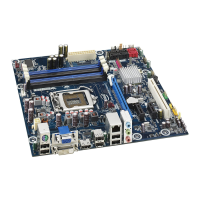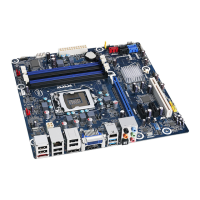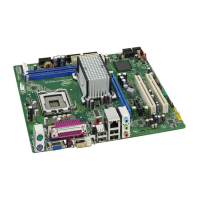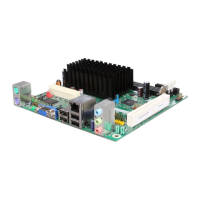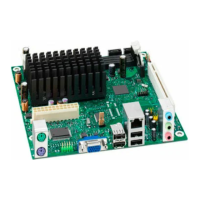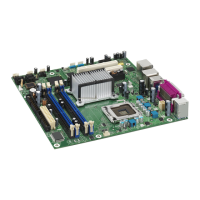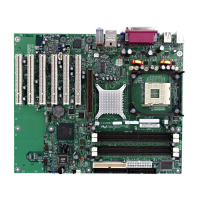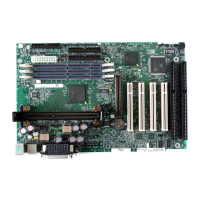
Do you have a question about the Intel AL440LX and is the answer not in the manual?
| Brand | Intel |
|---|---|
| Model | AL440LX |
| Category | Motherboard |
| Language | English |
Provides an overview of the AL440LX motherboard's technical specifications and capabilities.
Identifies and illustrates the various components located on the AL440LX motherboard.
Details the connectors found on the back panel of the motherboard and their functions.
Outlines important precautions and safety guidelines before starting motherboard installation.
Step-by-step instructions for installing a CPU onto the motherboard.
Instructions for preparing the motherboard to install a specific type of processor upgrade.
Procedure for safely removing an already installed processor from the motherboard.
Detailed steps for detaching the heatsink support base using a special tool.
Guides the user to external documentation for processor upgrade instructions.
Instructions for installing DIMM modules into the motherboard's memory sockets.
Step-by-step guide on how to safely remove DIMM modules from the motherboard.
Provides instructions and warnings for replacing the motherboard's CMOS battery.
Refers to the chassis manual for instructions on installing and removing the motherboard itself.
Outlines essential safety precautions and preparation steps before configuring the motherboard.
Describes the different modes available in the Setup program for configuration.
Step-by-step guide to adjust the processor speed using the BIOS Setup.
Procedure for resetting BIOS passwords via the configuration header and Setup.
Overview of the different menu screens available within the BIOS Setup program.
Details the keyboard shortcuts and function keys used to navigate and operate the Setup program.
Explains options for setting processor speed and clearing passwords in the Maintenance menu.
Describes the Main Menu options for system information and basic configuration.
Configuration options for setting the capacity and type of floppy drives.
Settings for configuring primary and secondary IDE devices and their parameters.
Details advanced chipset features and configuration options available in Setup.
Allows configuration of memory blocks and IRQs for legacy ISA devices.
Settings for configuring serial ports, parallel ports, floppy controller, and onboard audio.
Options for customizing keyboard behavior like Numlock state and repeat rate.
Settings related to video features, specifically Palette Snooping.
Options for managing and viewing DMI event logs.
Configuration options for setting user and supervisor passwords and unattended start.
Settings for managing power features such as inactivity timer and hard drive power.
Specifies boot features, boot sequence, and quick boot options.
Configures the boot sequence for installed hard drives.
Configures the boot sequence for removable devices like floppy drives.
Options for saving or discarding changes, loading defaults, and exiting Setup.
Steps to prepare for a BIOS upgrade, including recording settings and obtaining utilities.
Information on how to get the necessary BIOS upgrade files and utility.
Instructions on how to save current BIOS settings before performing an upgrade.
Steps to create a bootable floppy disk for DOS or Windows 95.
Procedure to prepare the floppy disk with BIOS upgrade files.
Step-by-step guide to perform the actual BIOS upgrade process.
Instructions on how to recover the BIOS if the upgrade process fails.
How to use the BIOS upgrade utility to change the language used by the BIOS.
Diagram and list of all motherboard connectors with their locations and functions.
Lists DMA channels, their data width, and assigned system resources.
Lists IRQs, their system resources, and default assignments.
Lists beep code patterns and their corresponding error descriptions.
Explains various error messages that can be displayed by the BIOS during POST.
Lists safety and electromagnetic compatibility (EMC) regulations the motherboard complies with.
Details various safety standards the motherboard adheres to from different regions.
Lists standards and regulations related to electromagnetic interference and immunity.
Describes certification marks like CE, UL, and Canadian Compliance.
Provides general warnings and precautions to observe during installation and testing.
Guidelines to follow for safe and compliant installation of the motherboard.
Ensures proper EMC compliance by verifying chassis, power supply, and module certifications.
Verification of host computer and accessory certifications for regional compliance.
Instructions on how to avoid overloading the power supply unit.
Instruction to place a warning label on the computer regarding battery replacement.
Specifies the intended use environments and locations for the product.
